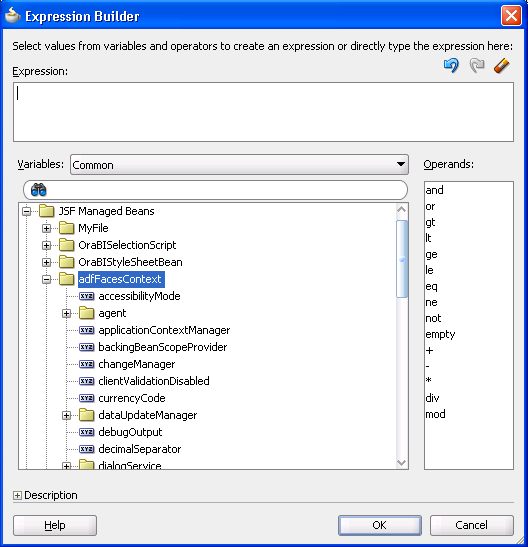고정 헤더 영역
상세 컨텐츠
본문
Many times I find xhtml templating hard to maintain, so in a recent project I decided to give a try to creating complex JSF component trees from Java code. This article will give you a quick overview about the techniques, benefits and drawbacks of this approach.Xhtml and EL is not java code (well, thank you, Captain Obvious) and thus it needs further IDE support for proper refactoring, searching, navigation, autocompletion and type-safety.

IntelliJ IDEA gives you a very good one, and there's JBoss Tools for Eclipse (though I find it very slow and unstable yet). Still, I find using pure Java code better in many cases.The other point is the declarative templating JSF2 and Facelets give you. I just don't like it. After a certain complexity, Java code is just easier to read, navigate and refactor. When you use procedural UI construction, composition, aggregation and other stuff are expressed as normal Java language constructs, and you have procedural control over them.
Create Facescontext Manually Windows 10

Creating ComponentsSo let's give it a go. I haven't tried creating entire JSF views from java code, the frames are still in xhtml. When there's more html content than components, xhtml is easier to write, but when there are more components, I turn to Java code. I just insert a component 'placeholder' in my xhtml template.
Hi everyone,I'm unable to get the real path of tomcat webapps folder in Liferay7.0 using JSF Portlet. Below is the code which I've tried fromdifferent waysto get the path but this code returns the null value.Method 1:String path =FacesContext.getCurrentInstance.getExternalContext.getRealPath(');// return nullMethod 2:PortletRequest req = (PortletRequest)FacesContext.getCurrentInstance.getExternalContext.getRequest;PortletContext pc = req.getPortletSession.getPortletContext;String path = pc.getRealPath('.' ); //Even I've given theexact folder name instead of dot but no luck.How can I get the real path of tomcat webapps folder inLiferay 7.0 using JSF Portlet any suggestions? Thanks in Advance.
Hi Abuzar,The JavaDoc for states:This method returns null if the portlet containercannot translate the virtual path to a real path for any reason(such as when the content is being made available from a.war archive).Liferay 7.0 handles WARs itself rather than deploying them to theapplication server, so if you take a look in the $TOMCATHOME/webapps folder, you’ll see thatyour WAR is not there. Instead it is in the $LIFERAYHOME/osgi/war folder. Since thefile(s) you are looking for are being served from a WAR archive(rather than the file system or an exploded war),getRealPath will always return null.If you provide some more context about what you are trying to do (andperhaps an ), we might be ableto give you a different solution.- Kyle.
Create Facescontext Manually Download
Hi Kyle,Thanks for the reply. I'm trying to keep (store) files into$TOMCATHOME/webapps/projectnamefolder/temp I've created foldermanually inside webapps because I'm storing files into that folder.But as you mentioned above getRealPath will always return null fromthis method. You said absolutely right in the above comment.My problem is that I want to store files into temp folder if Icreate temp folder inside the project hierarchy then still I'munable to findthe path of project temp folder.After store the files into temp folder I need to access these filesfrom that folder as well.What should I need to do for getting the path of temp folder eventhis temp folder is inside project hierarchy or inside webapps folder?Thanks in advance. Hi Abuzar,I recently did a project where I needed to use atemporary folder to store some things on the file system. I'm trying to keep (store) files into$TOMCATHOME/webapps/projectnamefolder/temp I've created foldermanually inside webapps because I'm storing files into that folder.This is completely discouraged and very much unsupported by appservers. The webapp is not meant to be yours to to modify, it is thepurview of the application server itself.Tomcat has always been known to be a little lax at its assertion ofownership on that folder allowing, for example, direct modification tofiles in the exploded war directory.That said, you still shouldn't do it.




